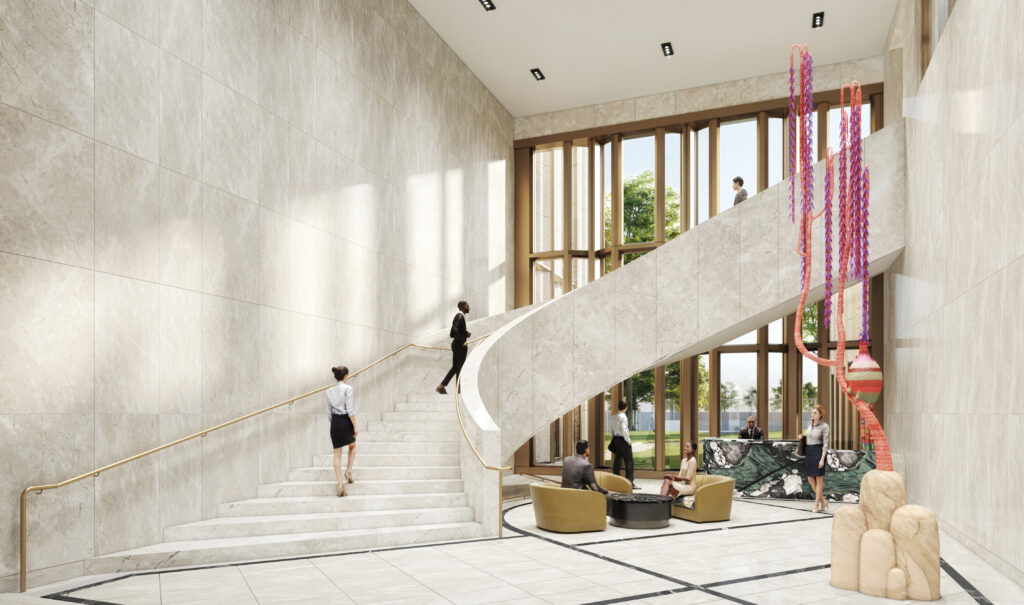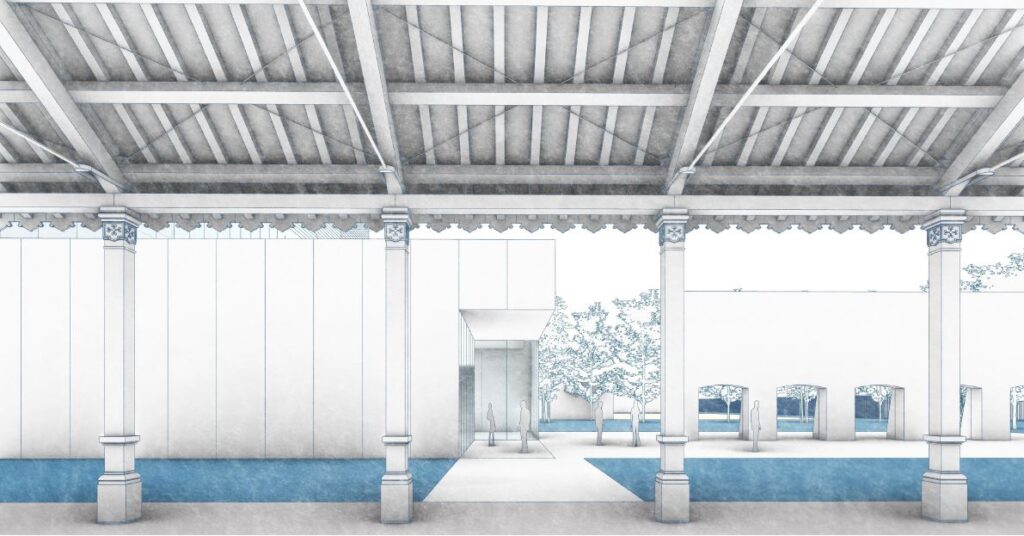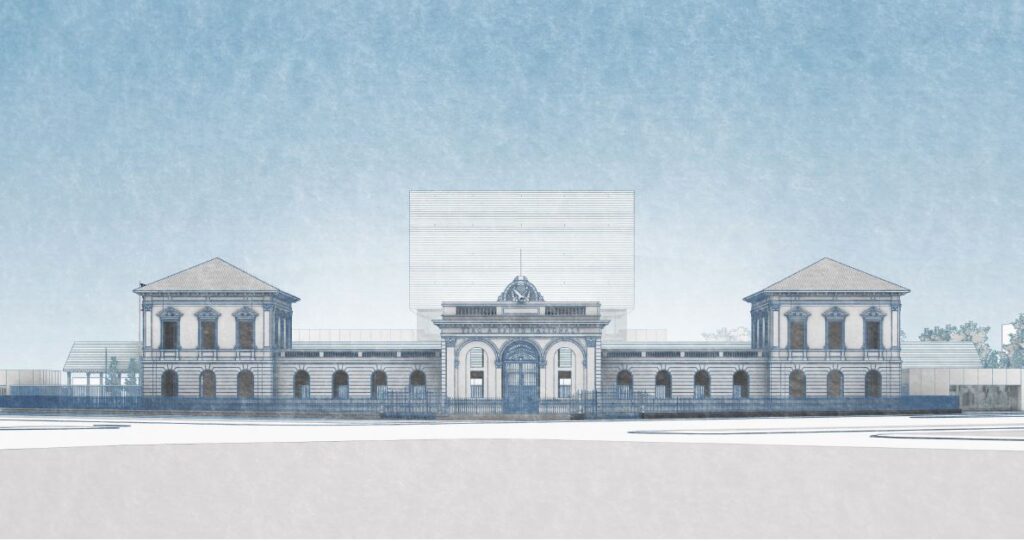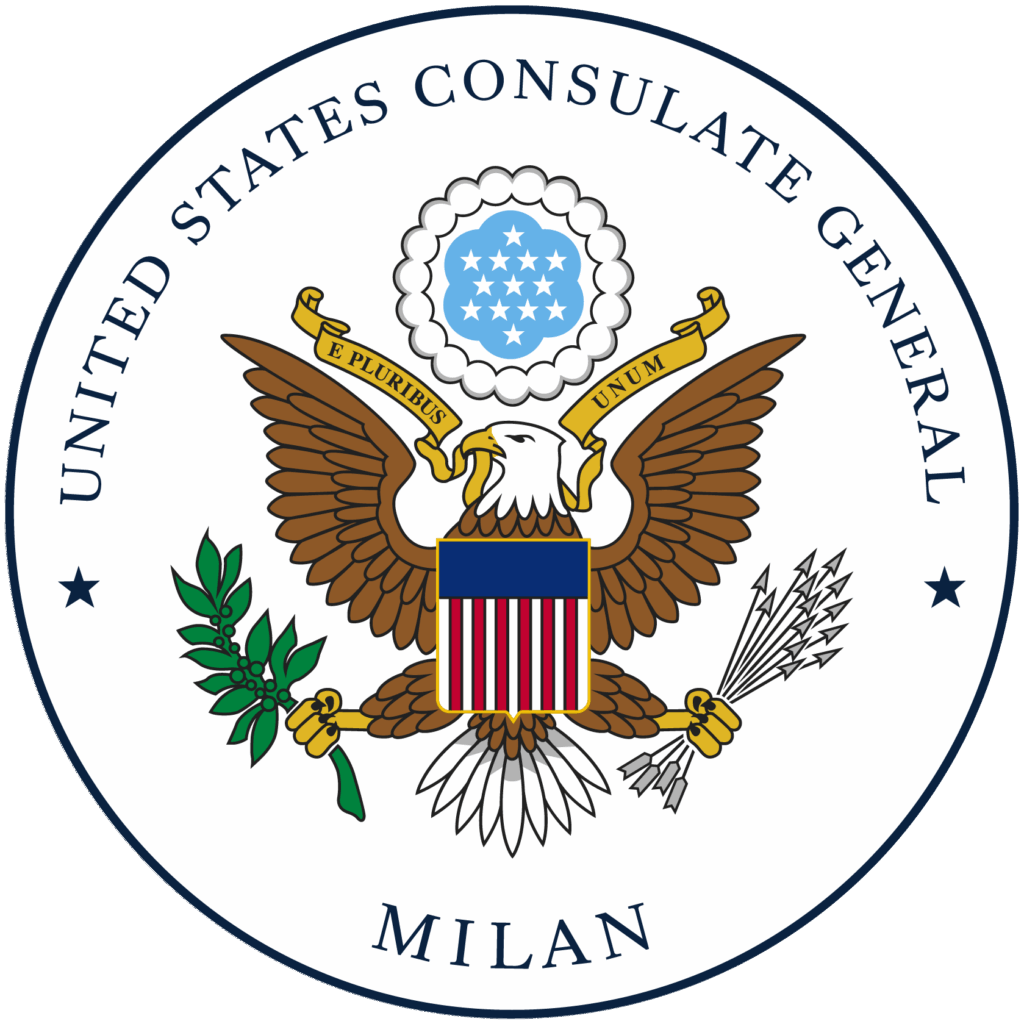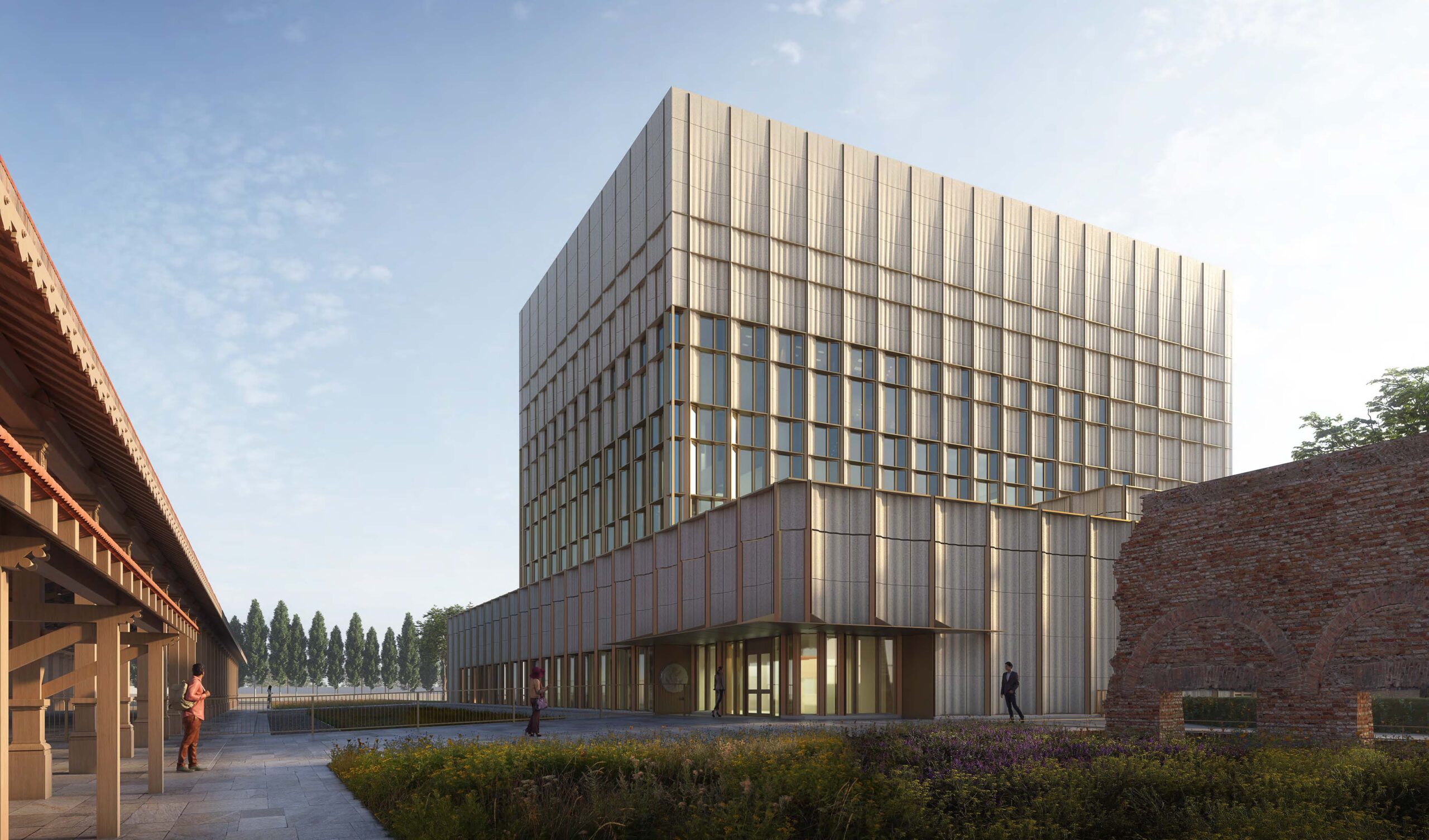
The new U.S. Embassy Milan embodies OBO’s mission of providing the most effective facilities for U.S. diplomacy abroad ensuring the United States is safer, stronger, and more prosperous.
Project Overview
SHoP
Architect
Caddell Construction
General Contractor
$351.2 million
Project Budget
10 acres
Site Size
$79 million
Estimated Local Investment
The new U.S. Consulate General Milan will support important diplomatic and commercial relations between the United States and Italy.
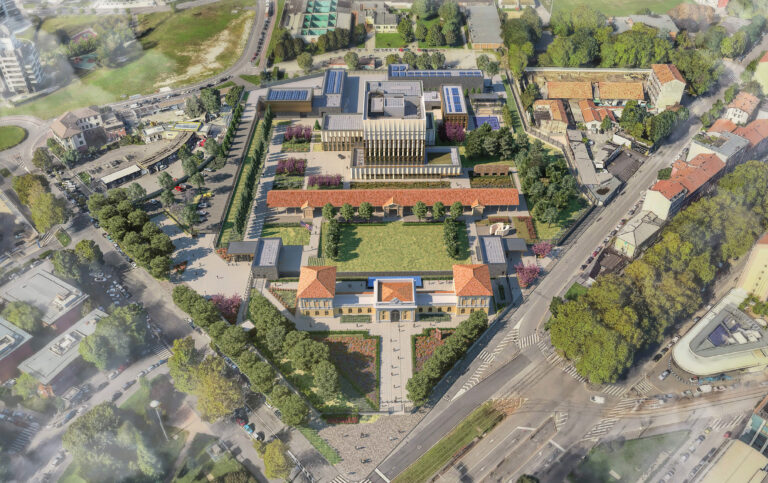
Design & Construction
Situated on a 10-acre site on the historic grounds of Piazzale Francesco Accursio, the architectural design of the new U.S. Consulate General Milan integrates historic remnants from a former shooting club using a mix of modern and historic methods and materials. The Chancery façade is an intricate framework of digitally processed and fabricated stone panels, a reference to classical architecture.
The new facility maximizes opportunities for representational space to include restoration and repurposing of the iconic club headhouse named the Liberty Building, reconstruction of a large
canopy to be used for a variety of events, and restoration of gardens on either side of the Liberty Building to include Liberty Plaza and the Parade Ground. All are seamlessly connected by accessible paths.
The Consular Entrance will lead to an experiential path to include other remnants of the former club, as well as sculpture and gardens.
The Chancery will contain functional office space, two ample multipurpose conference rooms, and a cafeteria.
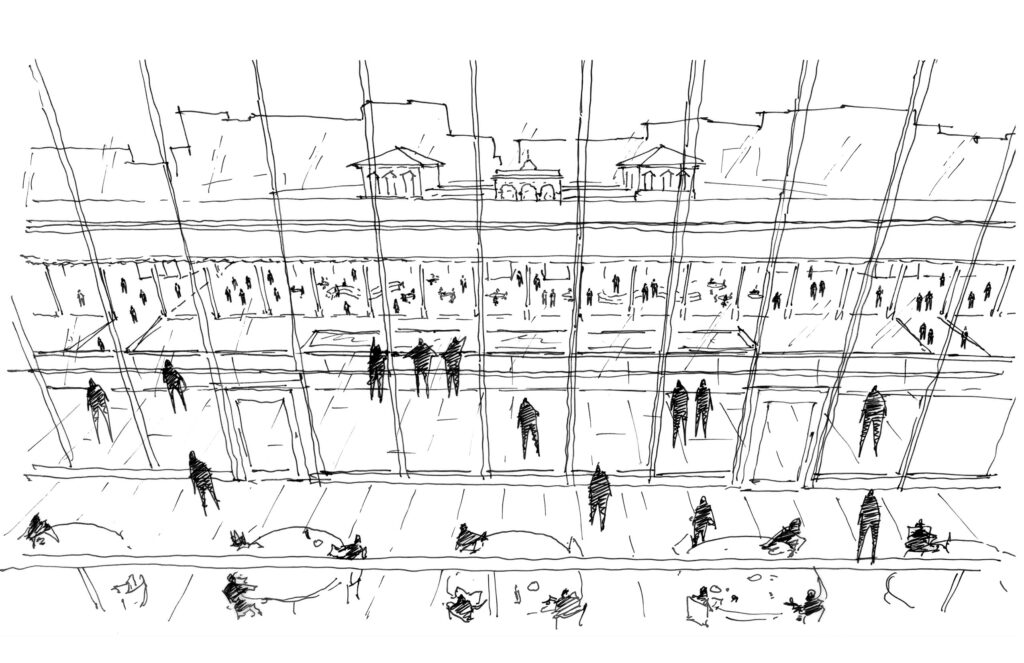
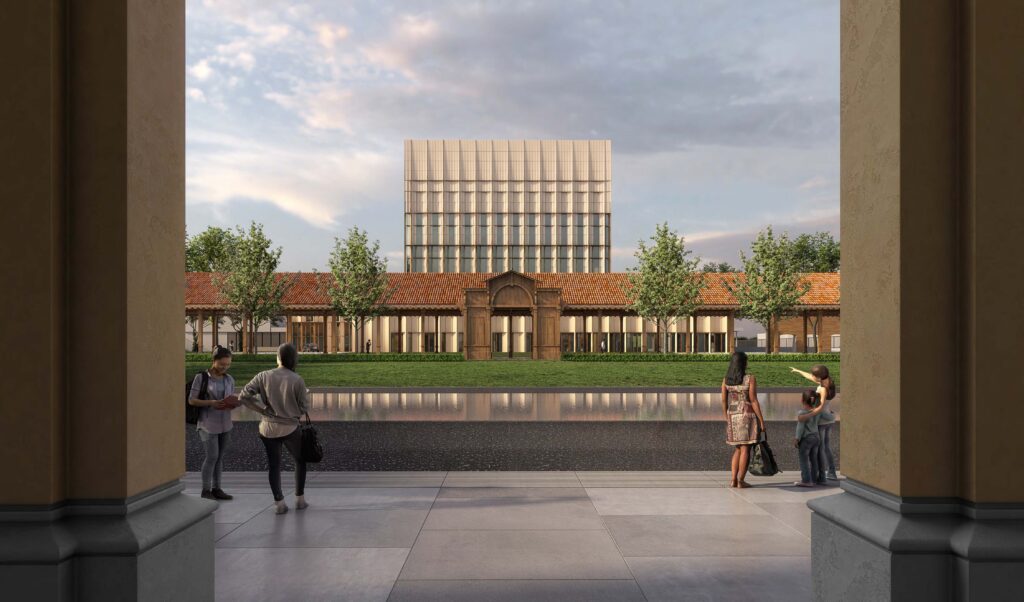
Building Performance
A model of building performance optimization, the design reduces risk and operating costs associated with security and maintenance while enhancing mitigation to natural hazards.
A first for OBO but common in Milan, an open-loop geothermal system will provide heating and cooling, greatly reducing the energy needs for the mechanical system.
Storm water capture systems will provide for the reuse of collected water for irrigation needs and prevent runoff from inundating the city’s sewers.
Photovoltaic arrays will generate power by harnessing the abundant sunlight, reducing the facility’s dependence on local energy sources and effectively lowering utility costs.
Arts & Cultural Heritage
The permanent art collection, curated by OBO’s Office of Art in Embassies, will include art in a variety of media, including painting, photography, beadwork, and sculpture by U.S. and Italian artists. Highlights will include two site-specific sculptures: an outdoor work by Beverly Pepper, an acclaimed U.S. artist and pioneering figure in monumental metal sculpture, and an interior sculpture by the Haas Brothers, who work at the nexus of art and design.
OBO’s Office of Cultural Heritage is working with the Foundation for Art & Preservation in Embassies and artist Eva LeWitt on a site-specific signature artwork for the Liberty Building. Archaeological specimens from the original shooting canopy, the only example of floral-decorated wooden architecture in Milan, will be on display, and one space will feature a room devoted to rotating exhibitions sponsored by the local cultural arts community.
The Liberty Building, originally constructed in 1905, has undergone structural stabilization and exterior restoration to preserve its classical architectural integrity. The fully restored building will be open to the general public and feature spaces devoted to history, archaeology, conservation, architecture, and art.
The Bullet Blocker, a 23-meter-long remnant of a masonry wall once used to funnel ammunition from shooters, and to catch errant bullets, has been stabilized and preserved as a historical feature within the new Consular Garden. Adjustments have been made to ensure the structure’s long-term stability while maintaining its visual and historical authenticity.
